The first phase of the project was about exploring primary 3D shapes (circles, square, and triangle) and their expression in architectural and interior design. Next, we chose an object used in interiors (such as a chair) that inspired us the most and researched how the primary shapes were expressed in these designs as well.
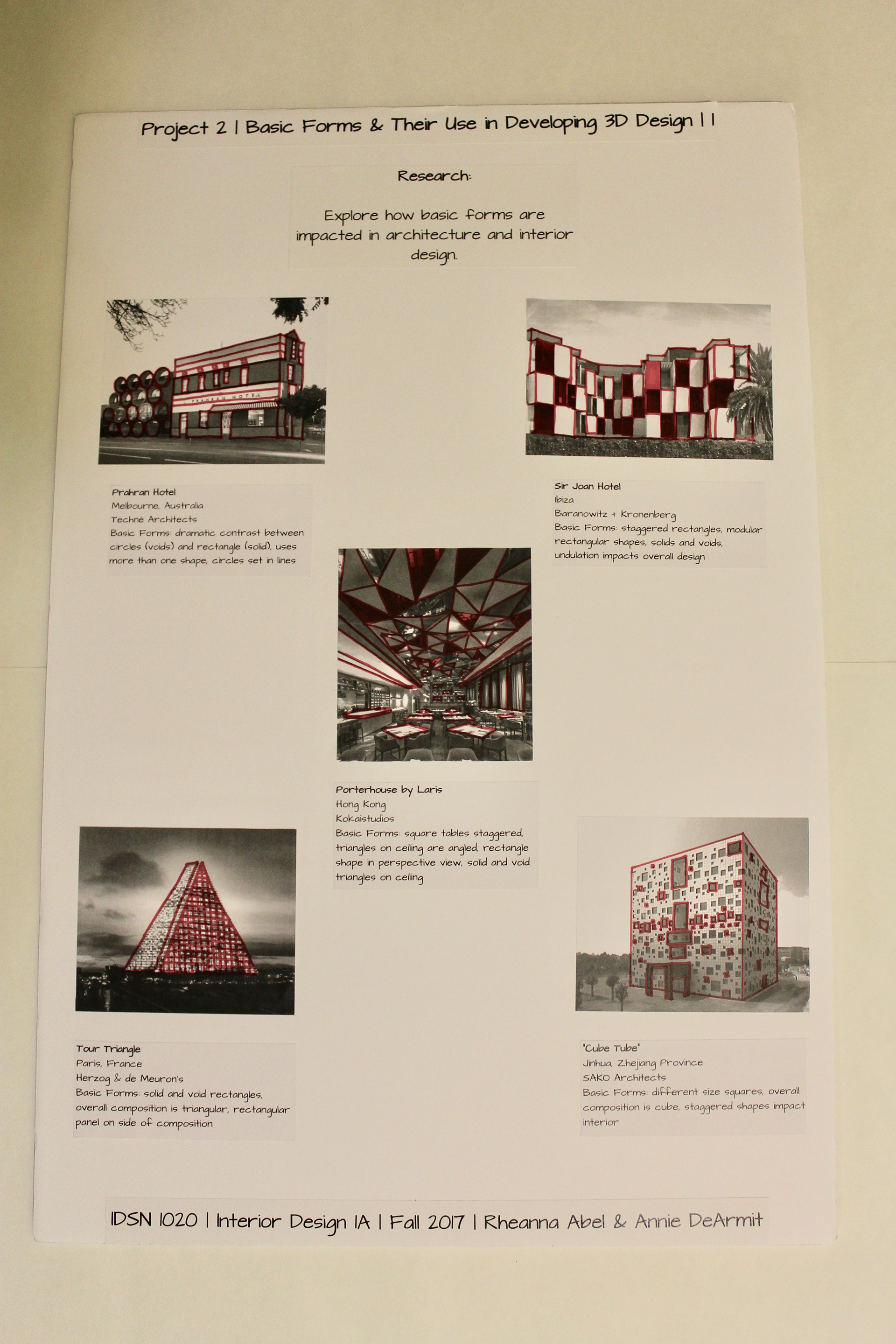
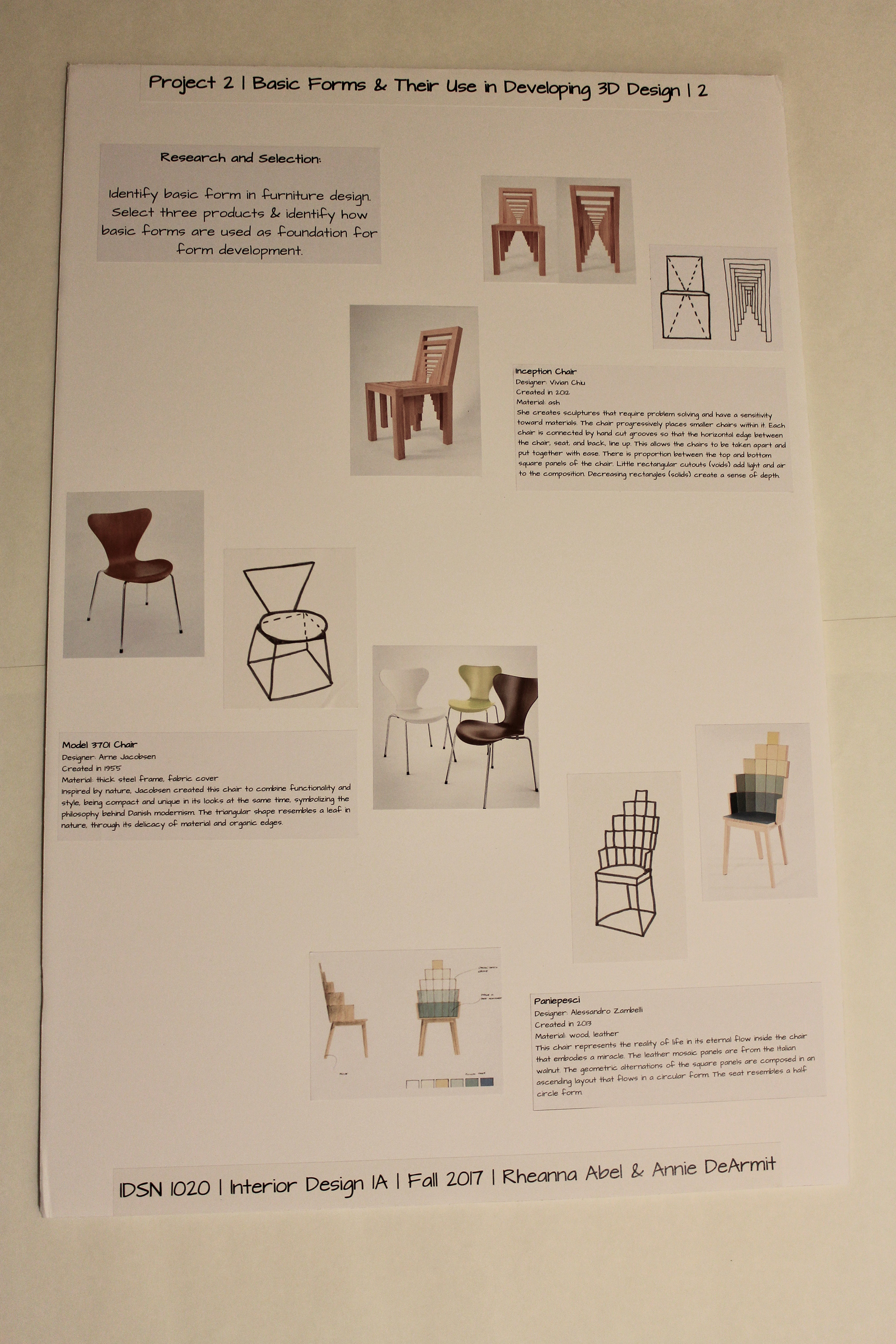
Concept
Design a multifunctional, modular furniture using basic forms with a focus on functionality and aesthetic quality.
This project first started with the intention of being a chair, which progressed to a multi-functional children’s design. The final design consisted of three individual blocks to form various arrangements for kids to interact and create. The three blocks are an isometric triangle, equilateral triangle, and a cube. We explored cutouts to enhance our overall design and make it more interactive.
This design is to be used in a residential setting. Although, with its versatility, it can be used in a children’s waiting room or a school play area. Each block will be made out of fiberglass so that it is light enough for the child to pick up and move around. With the versatility of this design, it can be used as many things, such as a playhouse, shelving, chair, or table and bench.
Plan
Quater Scale, Inches
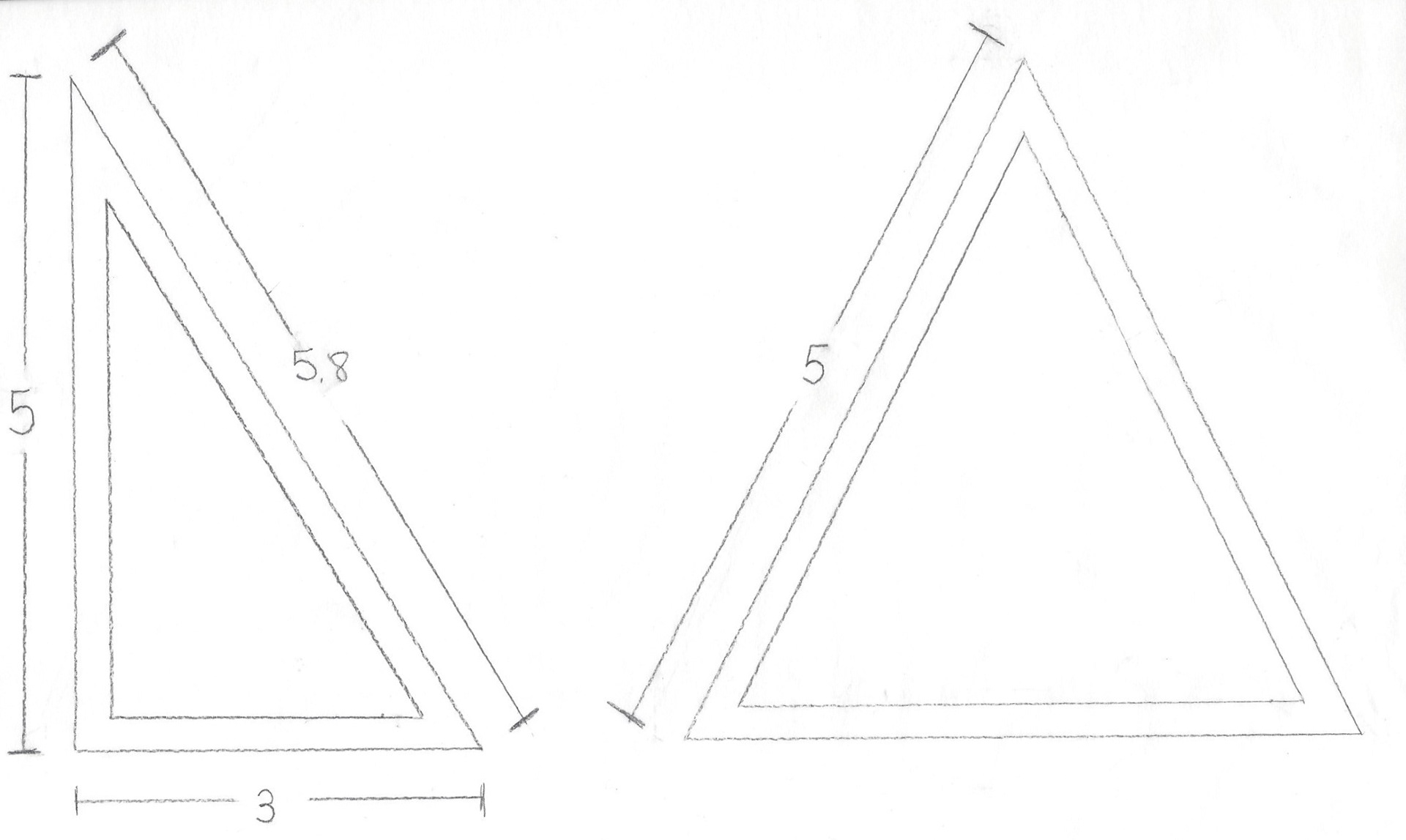
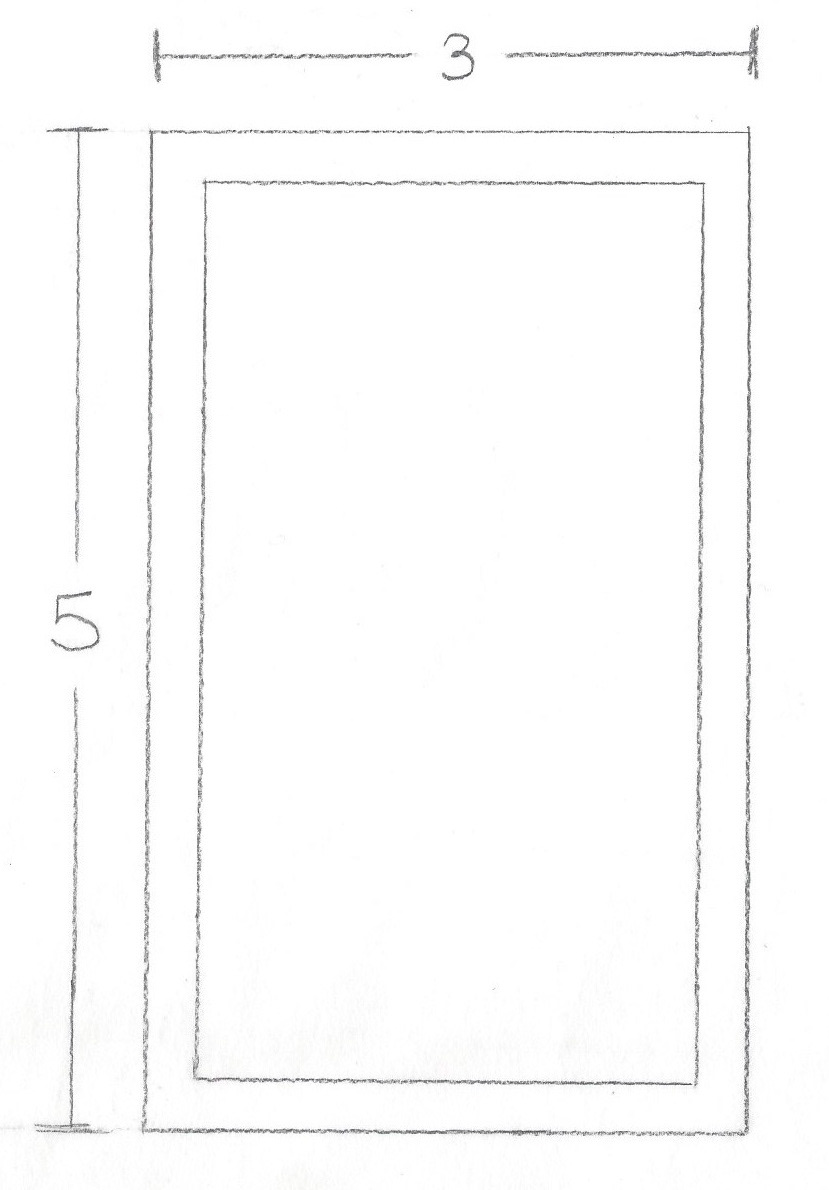
Isometric Drawings
Quarter Scale, Inches
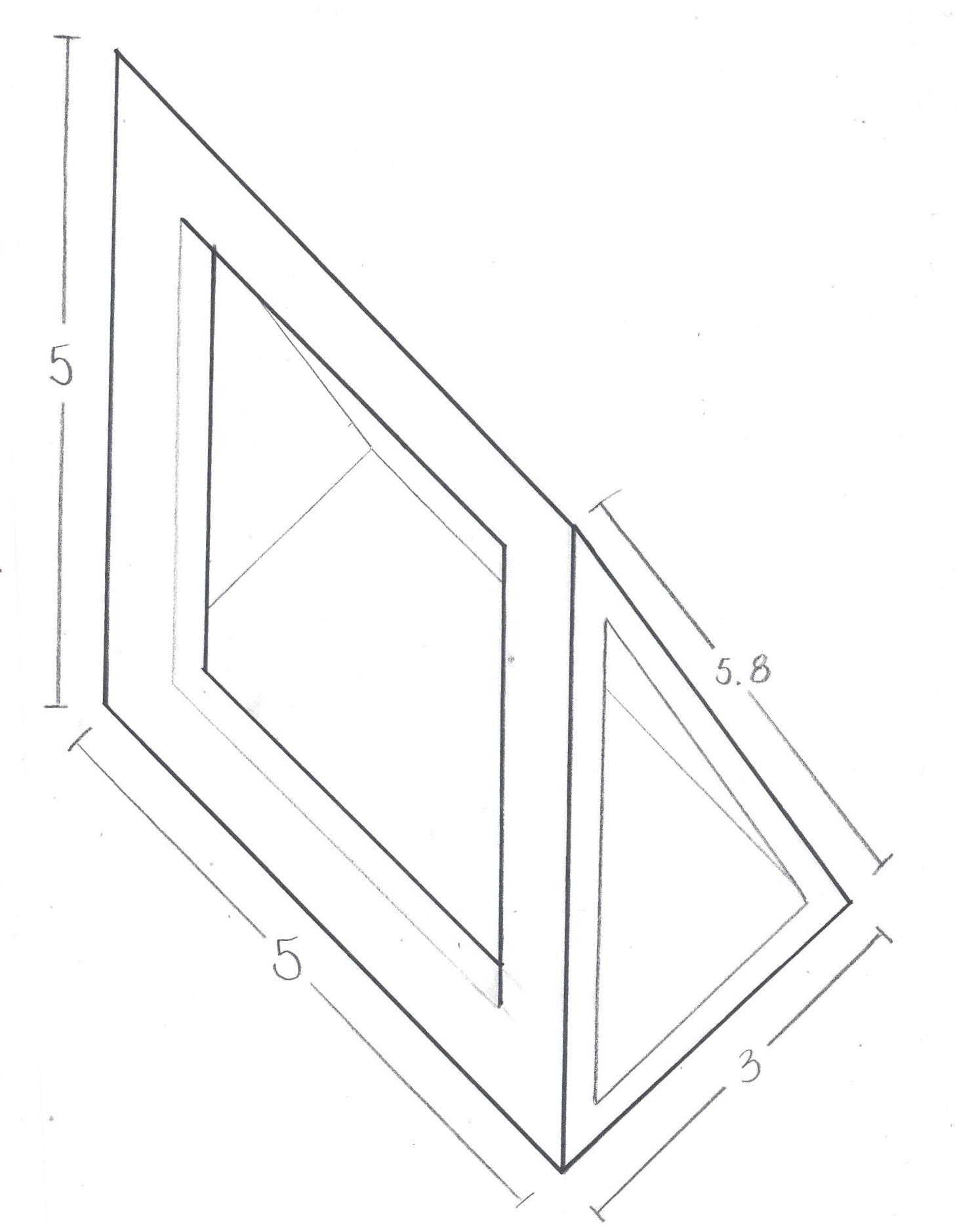
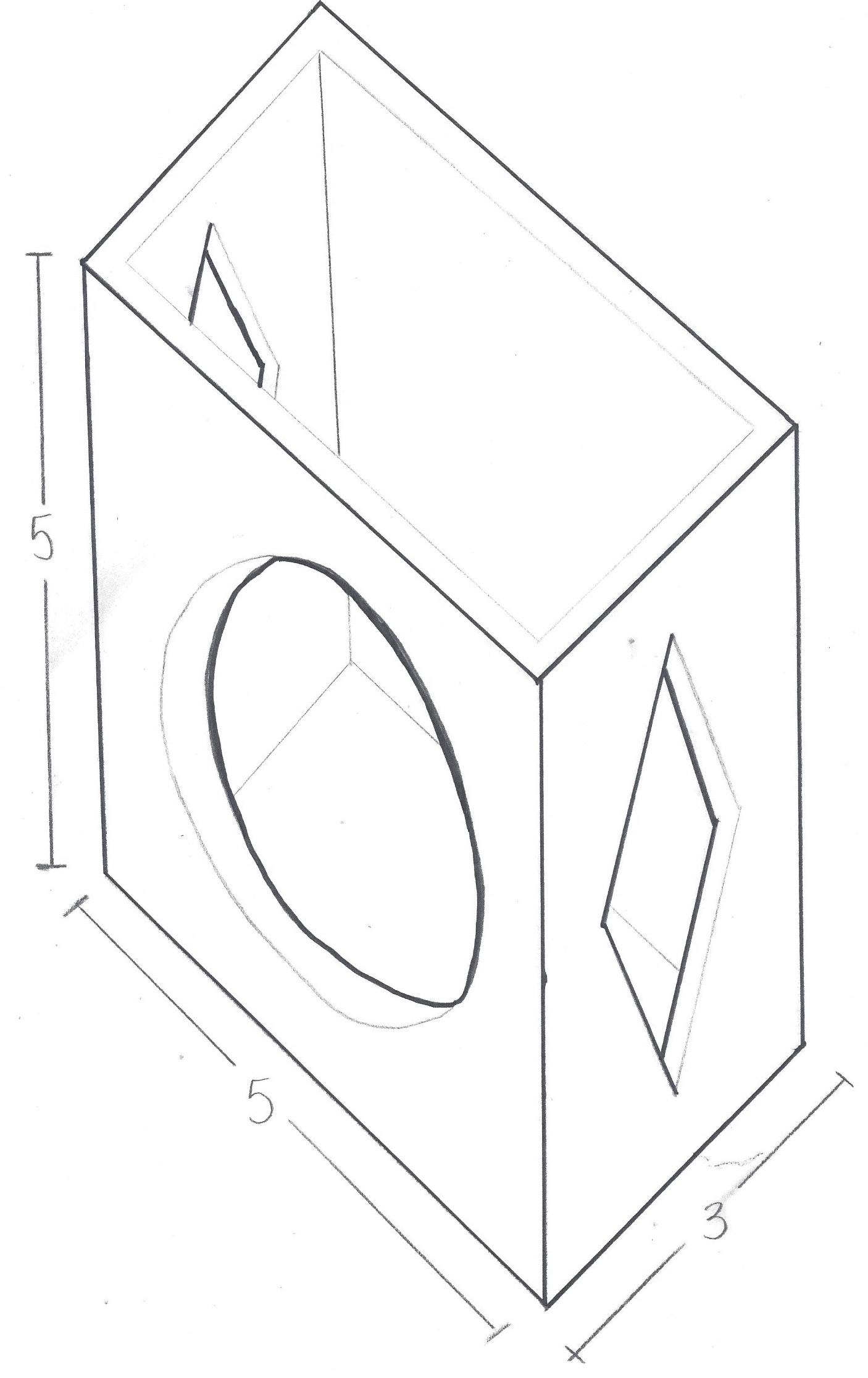
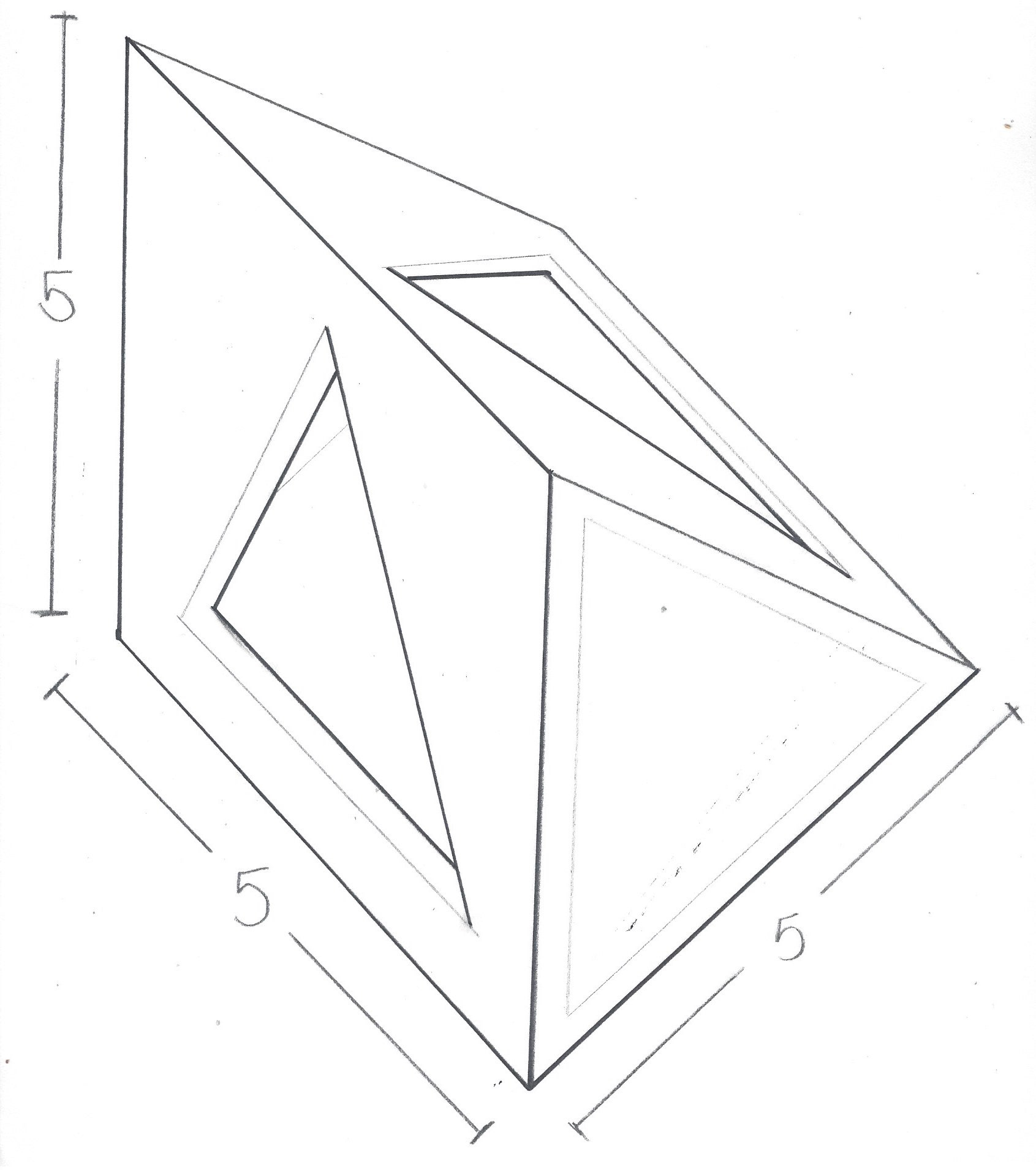
Chair
For our initial design, this functions more than just a chair. On the back, we incorporated a small basketball hoop, and interactive beads on the sides. The openings of the triangles allow for the storage of books and art supplies. We added the felt squares to add another dimension to the design.
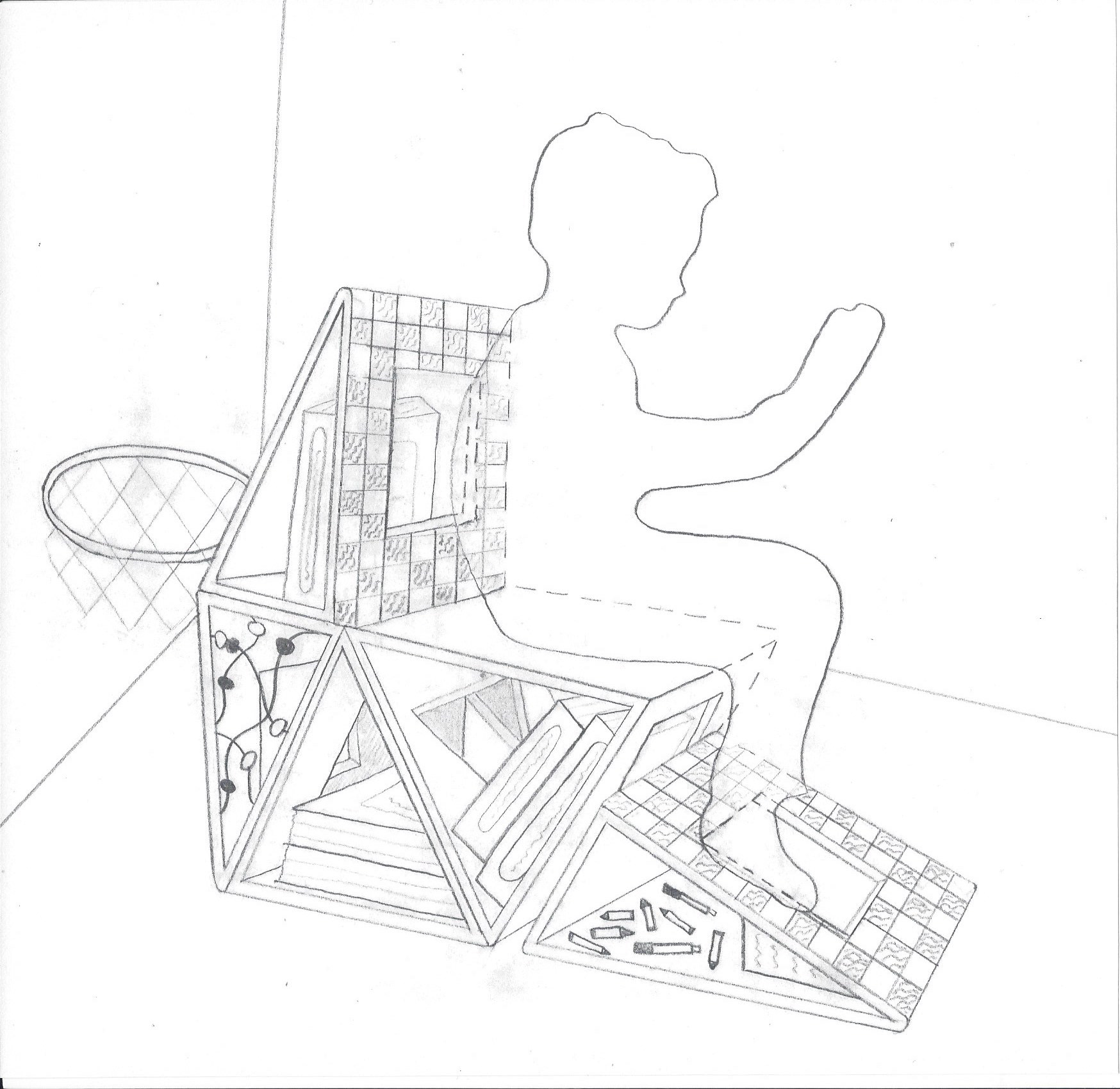
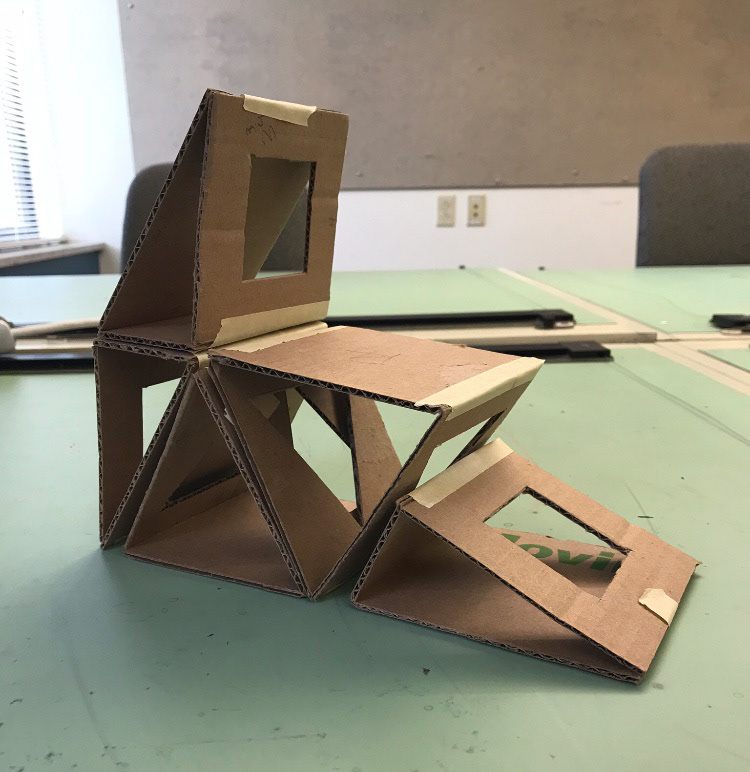
Shelf
With this combination of shapes, we wanted to explore the possibility of a more flexible design that can function as storage. From boxes, books, blankets and pillows, this shelving unit can function more than a design meant for children. With a door on one of the triangles, it allows for privacy for the stored items. The white board triangles on the door and felt squares on the side are also being incorporated on the outer edges to give the design more of an aesthetic appeal.
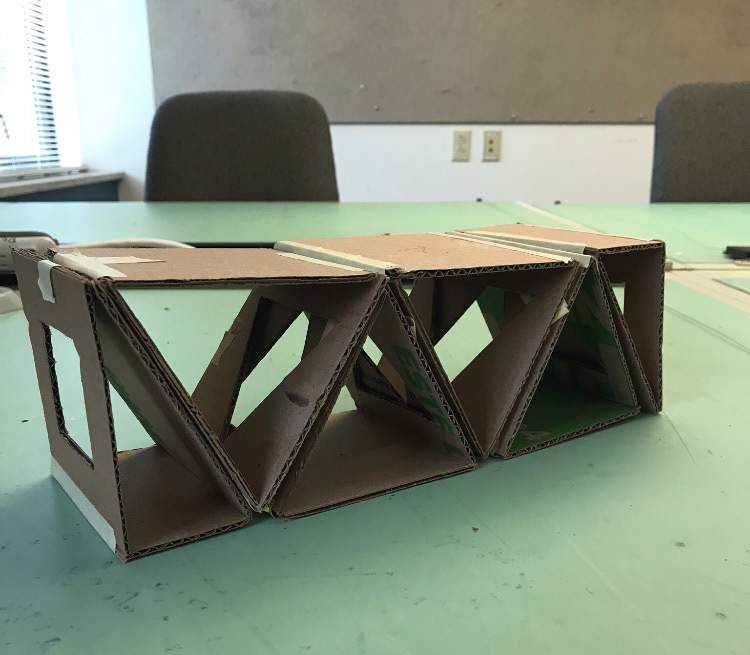
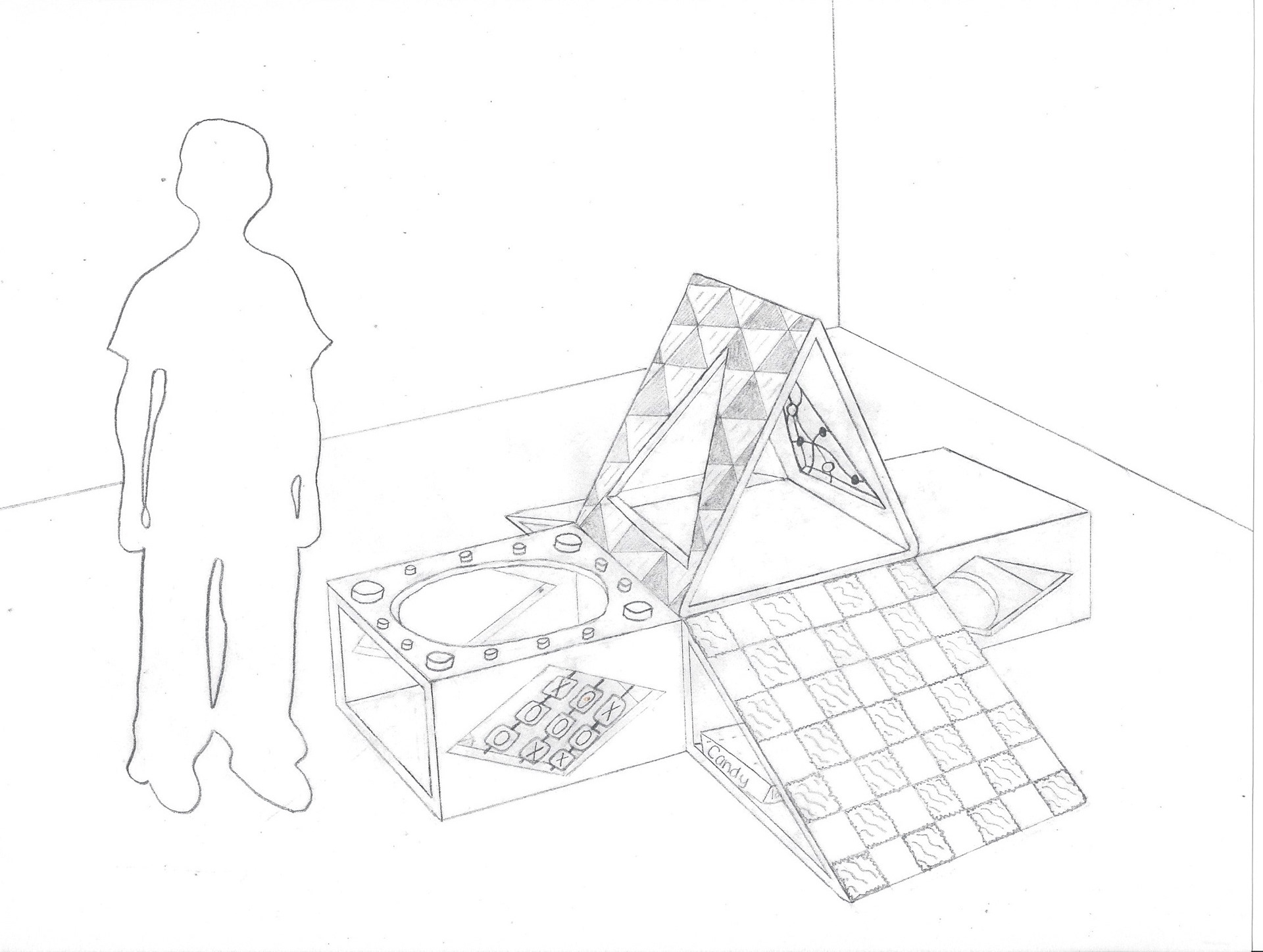
Playhouse
In this design, we combined all three shapes to form an interactive playhouse. The children can crawl through the cutouts in the equilateral triangle, sit on top of the rectangle, or slide down the right triangle. The children can interact with the beads, tic-tac-toe, and the buttons. On the equilateral triangle, there are smaller white board triangles along the surface to draw on. On the right triangle, there are small felt squares to incorporate the sense of touch for the child.
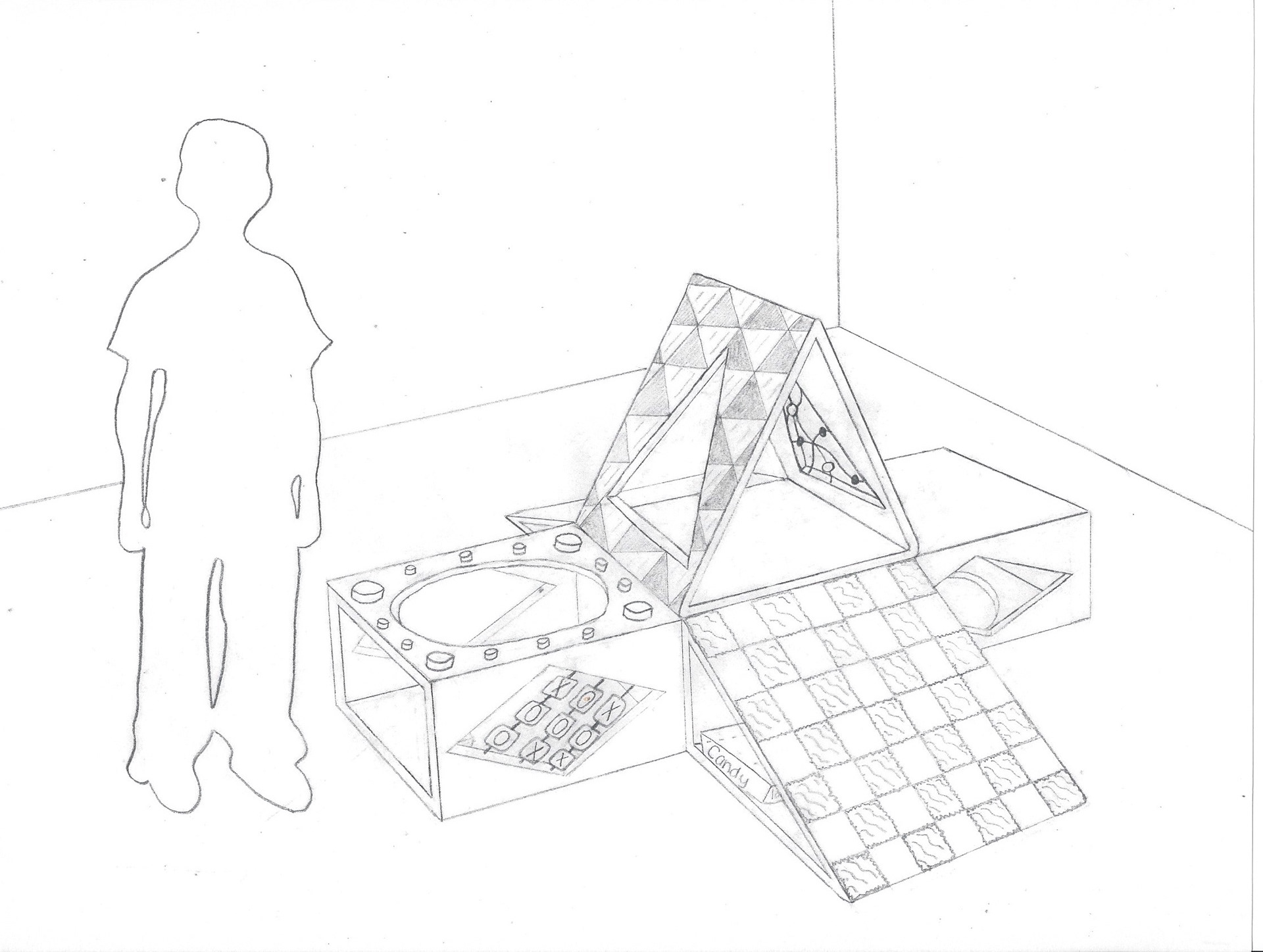
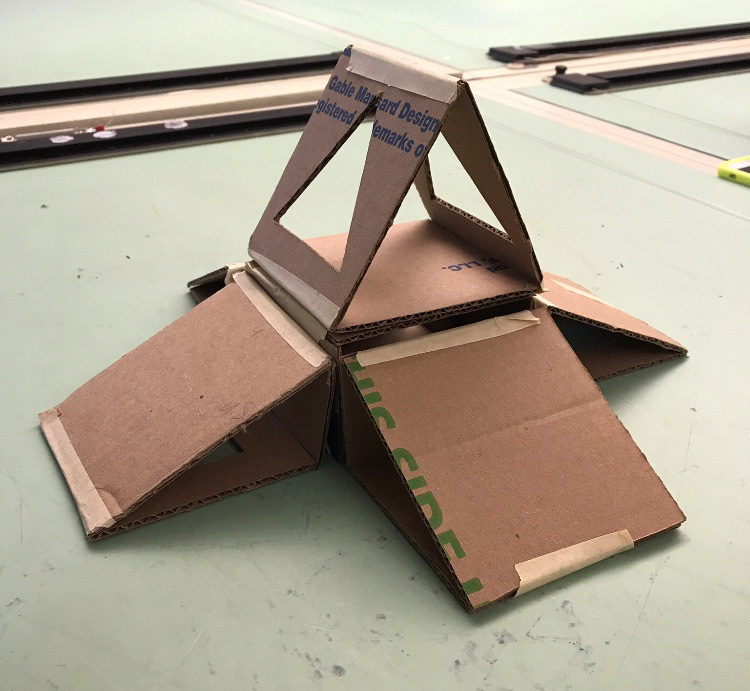
The other collaborator for this group project was Annie DeArmit.
